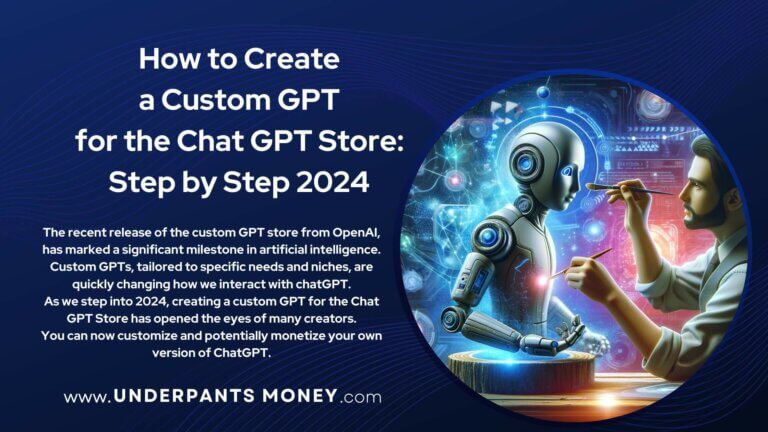Custom ChatGPT SEO Writer For Blog Articles: Step-By-Step Guide 2024
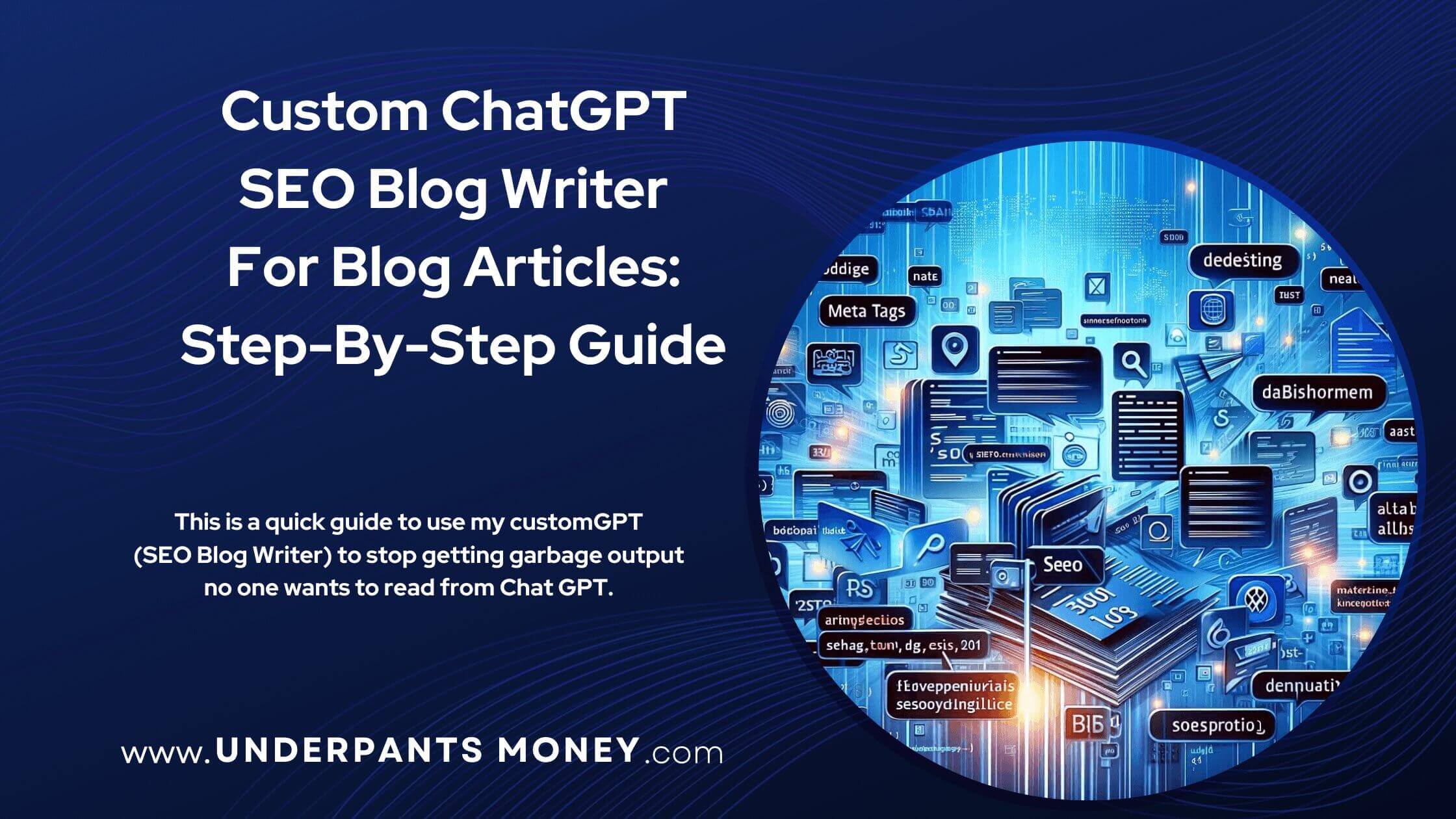
Understanding the GPT’s Purpose
As the landscape of digital content continually evolves, … shut it chatGPT!
No one writes like that. EVER.
So, here is a quick guide to use my customGPT (SEO Writer) to stop getting garbage output no one wants to read. It’s not flawless, and it will still produce odd results, but hopefully it will improve your workflow. The content is more readable than the standard chatGPT output, and with the built in workflow, it’s much faster to create your first draft.
You MUST still proofread, fact check, and edit the output.
This document itself is written using this custom GPT edited by yours truly. I am currently using this custom chatGPT in my workflow to create blogs for this website. Hopefully it can help you do the same. Enjoy!

The Supply And Demand Of GOOD Content
The demand for high-quality, SEO-optimized content has never been greater. Enter the specialized GPT (Generative Pre-trained Transformer): a cutting-edge tool meticulously designed to meet this need. This GPT isn’t your average content generator; it’s a powerhouse for creating content that not only captivates readers but also adheres to the rigorous standards of search engine optimization (SEO). (Not bad for chatGPT written right?)
Engaging, Authoritative Content:
At the heart of this GPT’s capabilities lies its proficiency in crafting articles that engage and inform. Whether it’s delving into complex topics or presenting straightforward guides, the content produced is always reader-focused. This ensures that each article is not just a collection of facts, but a compelling narrative that holds the reader’s attention from start to finish.
SEO Best Practices:
In today’s AI written world, being informative isn’t enough. Content must also be discoverable. This is where the GPT’s SEO expertise comes into play. It is programmed to integrate SEO best practices seamlessly into every article. From keyword integration to maintaining an optimal keyword density, and from structuring content for readability to ensuring that it aligns with the latest SEO trends, this GPT covers all bases.
The result? Content that not only ranks well on search engines but also provides real value to readers. By balancing reader engagement with SEO, this specialized GPT stands as an invaluable tool for anyone looking to elevate their online content strategy.
Ok, pretty good intro customGPT bot. There are a few words I would change, but overall it’s quite good. I’ll cut out all of the fluff and give you the bare bones version so you can learn quickly and use the tool. This is a user guide and not a full blog post after all. Cheers!
You can view the unedited conversation from this custom chatGPT as a reference in this post.
Before using this to create articles in your actual work flow, play around with it. Do a couple dummy keyword run throughs and say “OK” to every prompt and get comfortable with the workflow.

Keyword Acquisition
If you’re here, then you better know what a keyword is.
If not, go read this article and come back when you have more seasoning.
Input your golden keyword to the gpt and begin the content creation process.
The SEO blog writer will do some research and come back to you with something like this:
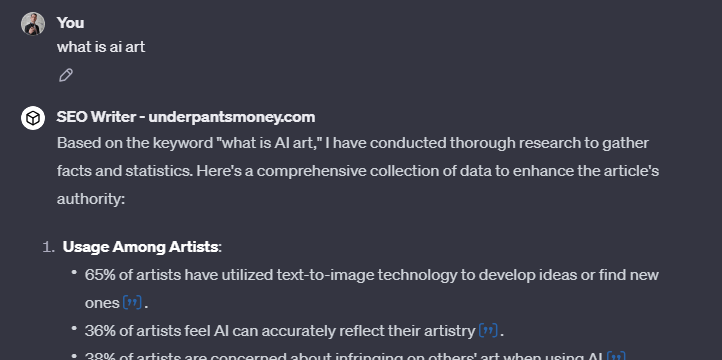
It will provide you with all of the statistics it found and a little information about how it will use them.
Simply type “ok” and let ChatGPT do its thing.
In fact, unless you want it to change something, you can pretty much just keep typing ‘ok’ for the entire creation process.
I’ve done it on multiple occasions to produce the first draft.
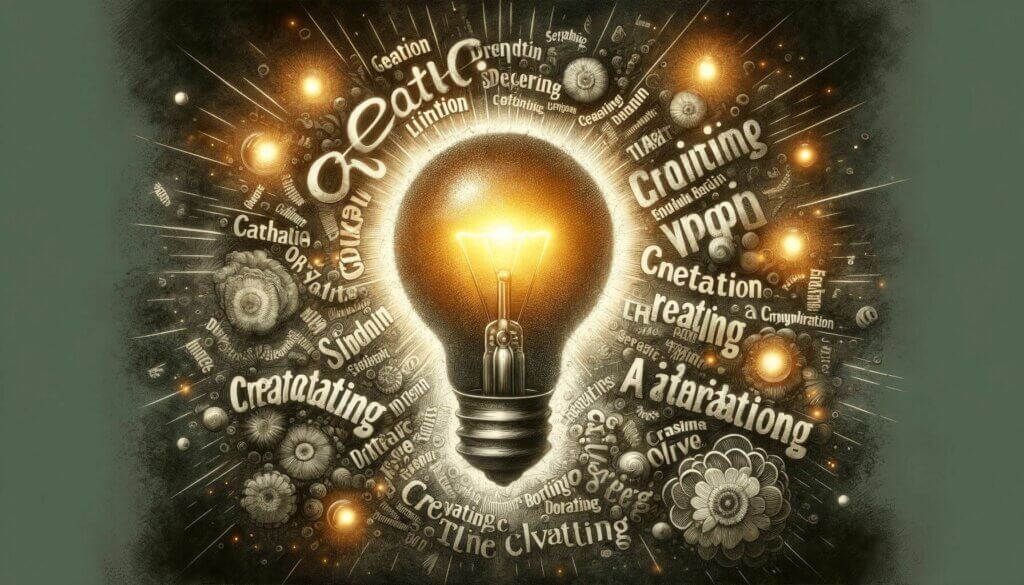
Title Generation
Next ChatGPT will generate 5 creative titles for you to choose from.
Type in the number of the one you like, ask for more choices, or give it a completely different one you like.
But remember, the title of your article is the first impression you make on your audience and search engines alike.
It’s a critical element that can significantly impact both click-through rates and search engine rankings.
Make sure it’s a good one. The customGPT is supposed to optimize the title including your target keyword.
You will get a confirmation similar to this:
Great! We’ve completed the Title Generation step. Now we’ll move on to the next step, Outline Development. I’ll draft a 5-point outline for the article, with each point serving as a main heading with potential subheadings. This outline will provide a clear structure for the content and ensure that it comprehensively covers the topic. Once the outline is ready, I’ll present it to you for approval, and you can suggest any modifications if needed. Let’s proceed!
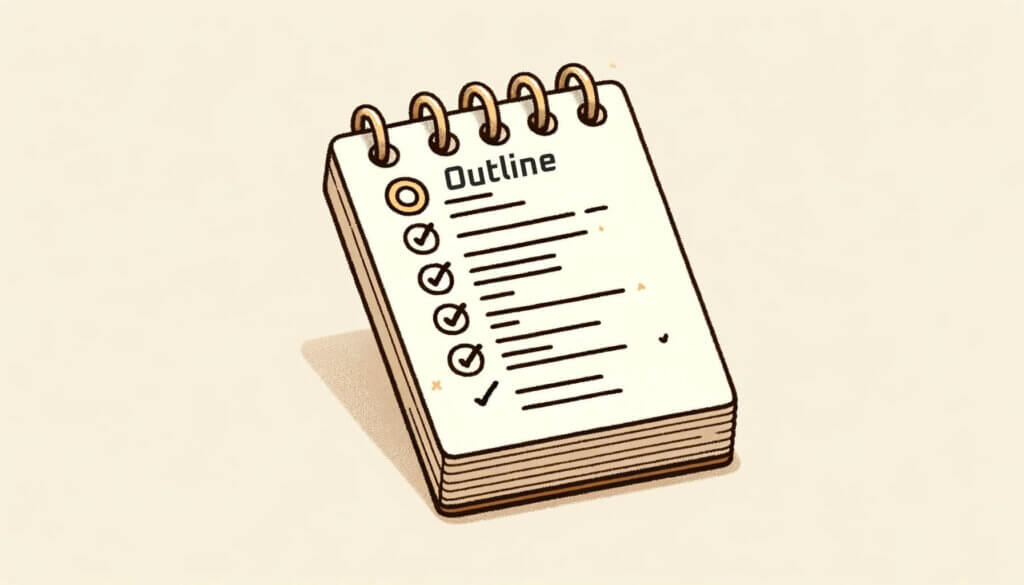
Outline Development
The article will be structured around five major points, each serving as a main heading.
Creating a well structured outline is a key component when creating an article.
Usually SEO Writer provides 2 – 3 subheadings per main heading, but if it does not, just ask for them.
Once the outline is presented, request changes as needed.
On occasion you will get H2 and H3 in the headings rather than formatting them.
If this happens, just tell chatGPT something like “Use the H2 and H3 tags to format the headings. Do not display H2 and H3 in the heading content.”
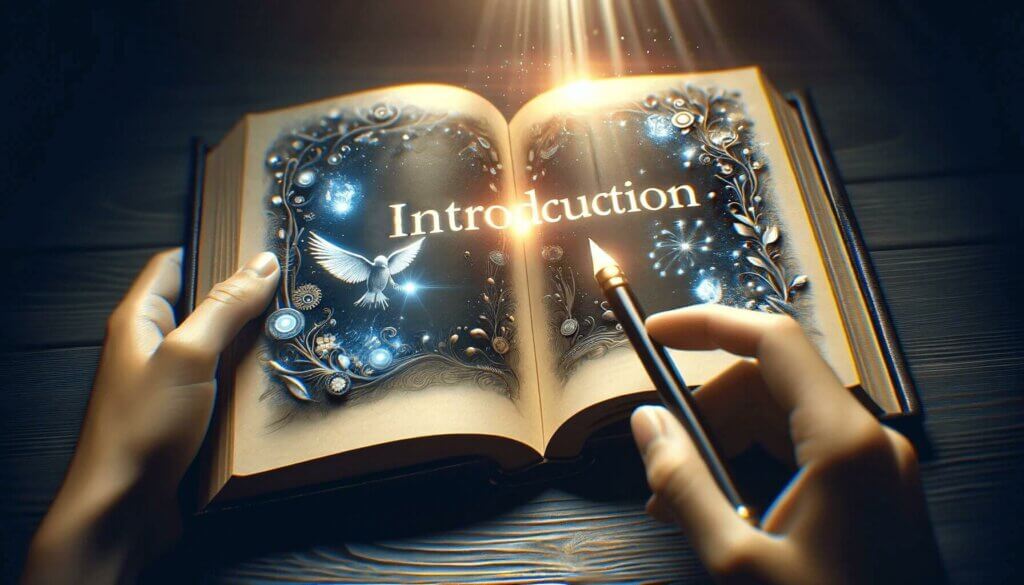
Introduction Writing
The Introduction Writing step is where the article begins to take shape.
This bot should create a well written intro using:
- A hook
- Engaging content
- Bold and italic formatting
- Well structured paragraphs
- A brief history and overview
- An active voice with transitions
To enhance the authority and credibility of the article, this customGPT will incorporate relevant research findings and statistics obtained during the initial research phase.
This factual data supports the topic and adds depth to the content.
DOUBLE CHECK ALL FACTS AND STATISTICS!
Ensure the source is credible and the facts are REAL. Don’t spread fake information.
After you have approved or made changes to the intro, the customGPT moves on to the first major point.

Content Development (First Point)
In this step, the first point will be written about in detail, spanning approximately 500 words. (Usually around 400.)
Key contextual information within this section will be highlighted using bold and italicized text.
The content will be enriched with factual data and statistics previously gathered.
Again, be sure to proofread and fact check everything.
Each Point Will Be Organized Under Clear Subheadings
These should be H2 for the main point, and H3 for the subheadings.
If the SEO blog writer got them wrong, tell it: Do it again. Ensure the main heading is an H2 tag and the subheadings are H3 tags.
If you did not get bold or italicized text, remind chatGPT to do it by asking: Where is the bold and italics?
When you are happy with the intro, give chatGPT another “ok” and move on.

Sequential Content
The SEO Blog Writer will move on to the next of the 5 major points.
Each point in the outline will be treated with the same level of attention and depth as the first.
As with the first section, important facts and statements will be emphasized using bold and italics to draw the reader’s attention and enhance the article’s readability.
Keyword placement and addressing user search intent, will be consistently applied across all sections.
Simply give the SEO blog writer an “ok” and smash the enter button to keep progressing.
Conclusion Composition
This is the final step in wrapping up the article.
ChatGPT will output a succinct summarization of the main points discussed in the article, along with a clear Call to Action, and a thought-provoking closing statement.
It will again ask for your approval.
Give the SEO writer Bot the now-familiar “ok” and move on.
Key Takeaways
The Key Takeaways section is an essential component of the article. I put one in every article I write.
I limited this to five bullet points maximum for effectiveness, but you can always ask for more.
Another “ok” for the SEO blog writer and the output goes brrrr!
Frequently Asked Questions (FAQs)
I hope you are familiar with how an FAQ works.
If you made it this far and you don’t know what frequently asked questions are, shame on you.
Go learn what they are, and why they are important!
Image Design
After this amazing SEO blog bot spits out the FAQs it will work on the images next.
Sometimes ChatGPT is cool and does them all at once, and sometimes it does one at a time with a description.
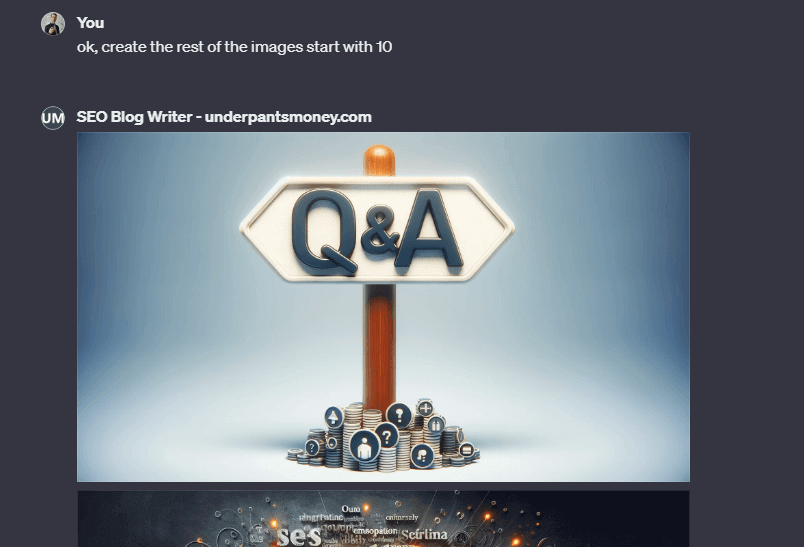
I prefer to tell the customGPT to do them in bulk like this: Create all images at once. Do not tell me about them.
If you get an error like this, simply tell chat GPT to create the last images: Create images 3, 4 , 5, For example.
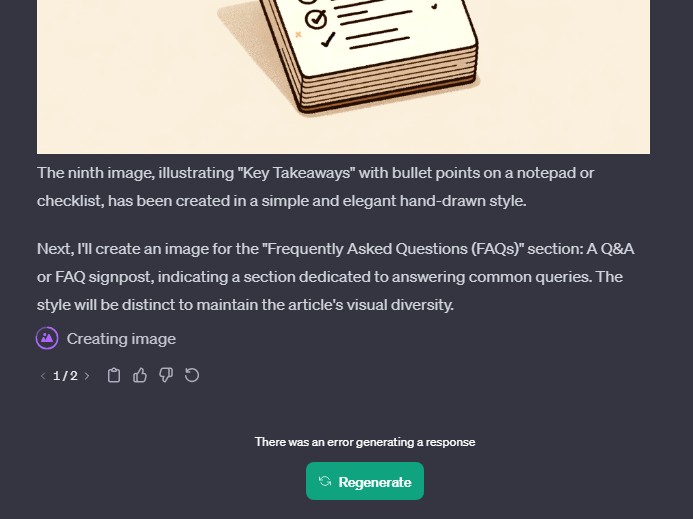
All images are created in a horizontal format, with a 16:9 aspect ratio. The images are designed to be simple and clear, avoiding overly complex or confusing visuals using different styles
The images should be created without embedded text, however this does still happen.
If you get odd text, and you will since DALL-E 3 is quite bad at handling text, tell the SEO Writer: Create the image again. DO NOT USE TEXT IN THE IMAGE.
Sometimes it works, sometimes you need to ask for a new image description without text.
Give the bot some indication you are done with the image generation and it will move on to metadata.
If it does not, a prompt like this should fix the issue: The images are finished. Please create the metadata for the article and images.
Metadata Crafting
After all images are created, the customGPT will create metadata for the SEO Title and description of your blog post. Right after that it should provide you with a description and alt text for all of your images.
When finished you should have this metadata.
Article Metadata:
- Title Tag: A concise and compelling title tag. (60 characters max)
- Meta Description: A brief, engaging description of the article. (160 characters max)
- URL Slug: An SEO-friendly URL slug.
NOTE: The URL Slug that is output is usually the entire title. I do not recommend using this. You will want to cut it down to more accurately represent your articles keyword.
Example: custom-chatgpt-seo-writer-for-blog-articles-step-by-step-2024 gets cut to customgpt-seo-writer
Image Metadata:
- Alt Text: Each image is accompanied by descriptive alt text.
- File Names: These are optimized to reflect the content and include relevant keywords.
Metadata is essential, or perhaps not, for your article to rank well. So make sure you get a good output, and prompt the SEO blog writer to create it again if you require.
Prompt “ok” to turn to page 48. Oh right, this isn’t a knockoff Choose Your Own Adventure book. Which is actually trademarked in case you were trying to write some dodgy copy using chatGPT.

Final Review and Publishing
And here we go. The end. Almost…
After the metadata has been created you need to take all of this, cram it into your editor of choice, and edit.
Here are some guidelines to follow before publishing.
Complete Article Review:
- Content Accuracy and Consistency: Proofread the entire article, including the introduction, main points, conclusion, key takeaways, and FAQs, to ensure accuracy, consistency, and overall flow. Your article should be cohesive and comprehensive.
- Formatting Check: Check the formatting of the article. You should be able to copy and paste this draft directly into your content management system (CMS) as the SEO writer is instructed to write in markdown formatting.
Image and Metadata Review:
- Image Placement and Relevance: Since all images were output together, be sure to place them in the correct sections. Remember, it is important to compress the images for use on the internet.
- Metadata Accuracy: Review all metadata to ensure accuracy and optimization. This includes checking the title tag, meta description, URL slug, alt text, and image file names.
External Links Verification:
- Functionality: All external links included in the article are checked to ensure they are functioning correctly.
- Relevance and Currency: Verify that the links are relevant to the content and lead to up-to-date and authoritative sources.
NOTE: I intentionally did NOT include internal or external linking to articles for this customGPT. It was producing unreliable results, so you will need to do this manually. Other methods exist on how to do this using ChatGPT like this one:
Credit Where Credit Is Due
I created this custom chatGPT based on the custom tool from SEO Fox on the GPT store.
If you enjoy using my customGPT SEO Writer and want to help me out. Please link to this article.
Please provide feedback by commenting below or contacting me by email.
Happy creating!


